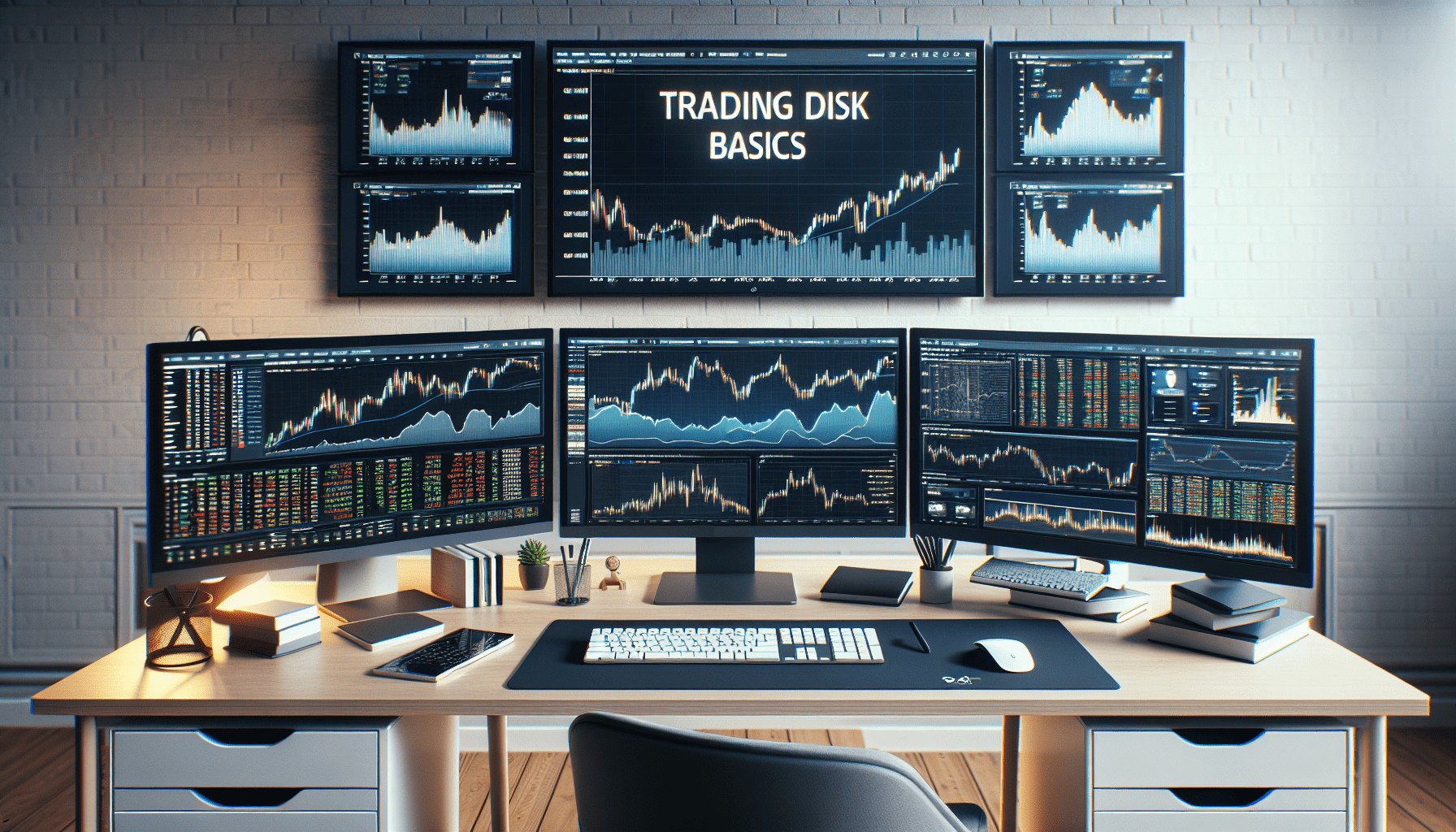Proven Alternatives: E8 Markets Customizable Drawdown Options (Mar 2025)
In today’s fast-paced prop trading arena, the one-size-fits-all approach to drawdowns is rapidly becoming outdated. Traders and prop firms alike are now looking into more dynamic solutions, such as the customizable drawdown options offered by E8 Markets. This article delves into advanced prop trading strategies, cutting-edge backtesting tools, and real-world case studies to show how these innovative solutions provide tailored risk-management options that can significantly optimize trading performance.
Understanding Customizable Drawdowns in Prop Trading
Traditional rigid drawdown limits often restrict trading performance by not accommodating the natural volatility of markets. With E8 Markets customizable drawdown options, traders gain the flexibility to adjust risk limits dynamically based on market conditions and personal trading strategies.
Benefits of Customizable Drawdown Settings
- Enhanced Risk Management: Adjust limits in real-time based on volatility and recent performance.
- Tailored Trading Experience: Personalize the settings to fit various strategies, whether high-frequency or long-term trends.
- Improved Capital Efficiency: Optimize drawdown parameters to maintain a healthier balance between risk and reward.
These benefits are all key in a prop trading environment where risk mitigation and strategy customization are essential. Effective risk management drives not only profitability but also sustainability in a fiercely competitive market.
Advanced Backtesting Concepts for Prop Trading
Robust backtesting is indispensable in the prop trading domain. Beyond merely running historical data, modern automated backtesting tools now offer sophisticated features such as automated parameter optimization, stress testing, and scenario analysis. Expert traders ensure that their backtesting practices include:
Common Pitfalls and How to Overcome Them
- Overfitting: Avoid excessively tuning models that only perform well in historical contexts by incorporating out-of-sample testing.
- Survivorship Bias: Ensure that historical datasets include delisted or non-performing assets for an unbiased view.
- Look-Ahead Bias: Maintain strict separation between training and testing data sets to avoid false signals.
- Data Snooping: Use walk-forward optimization to update and validate strategies across different time periods.
Walk-forward and out-of-sample testing are particularly vital, as they provide a robust framework that mimics live trading conditions. The next phase involves integrating these results with forward testing (such as paper trading) to confirm the viability of any trading strategy in real-time.
Automated Backtesting Tools Comparison
To fully maximize the potential of customizable drawdown options, selecting the right automated backtesting tool is crucial. Below is a detailed comparison of several prominent platforms popular among prop trading experts:
| Feature | TradingView | MetaTrader 5 | NinjaTrader |
|---|---|---|---|
| Backtesting Features | Vectorized backtesting, integrated scripting for custom indicators | Robust event-driven testing, commission/slippage simulation | Advanced optimization and scenario stress testing |
| Data Quality & Availability | Extensive historical data across asset classes with real-time feeds | Wide-ranging asset classes, seamless integration with broker data | High-quality tick and bar data, extended historical datasets |
| Integration Capabilities | API access, broker connections, library of third-party plugins | Built-in broker integration, supports external tool linkage | Comprehensive API, customizable for team collaboration and firm-level risk management |
| Pricing & Use Cases | Subscription-based, scalable for individual retail and prop firms | Accessible for retail traders with trial options; popular in prop firm environments | Mid to high tier pricing ideal for professional and institutional settings |
This table clearly contrasts the backtesting capabilities, data quality, integration ease, and pricing tiers among the leading platforms. Each is tailored to serve different roles within the trading ecosystem, from individual retail traders to full-scale prop firms.
Visual Insights: Promotional Image 1
Below is a sample screenshot of a backtesting report generated using MetaTrader 5, illustrating key performance metrics such as Sharpe Ratio, maximum drawdown, and profit factor. This visual guide serves as a practical reference for traders looking to understand the impact of customizable drawdowns on overall strategy performance.

Expert Backtesting Strategies and Automation
The integration of customizable drawdown options is much more effective when combined with sophisticated backtesting automation. Here are some proven methods to enhance strategy validation:
Walk-Forward Optimization vs. Traditional Backtesting
Unlike traditional backtesting which uses a fixed historical period, walk-forward optimization continuously updates the testing period. This method provides advantages by adapting to market changes and reducing model decay. For instance, a trader can employ Python scripts with Backtrader to automate the walk-forward process:
import backtrader as bt
class MyStrategy(bt.Strategy):
def __init__(self):
self.sma = bt.indicators.SimpleMovingAverage(self.data.close, period=15)
def next(self):
if self.data.close[0] > self.sma[0]:
self.buy()
elif self.data.close[0] < self.sma[0]:
self.sell()
cerebro = bt.Cerebro()
cerebro.addstrategy(MyStrategy)
data = bt.feeds.YahooFinanceData(dataname='AAPL', fromdate=datetime(2019, 1, 1), todate=datetime(2020, 1, 1))
cerebro.adddata(data)
result = cerebro.run()
Such automation facilitates parameter optimization and scenario analysis, critical for risk management in a prop trading setup. The ability to adjust drawdowns in real-time further complements these strategies by aligning risk controls with changing market dynamics.
Integrating Forward Testing and Live Deployment
No backtesting routine is complete without a forward testing phase. Many experienced traders combine paper trading with their automated systems to verify the robustness of strategies. This practice helps in monitoring live performance metrics such as drawdown adjustments, trade frequency, and risk/reward ratios before committing real capital.
Visual Insights: Promotional Image 2
This next image offers an example of a dynamic drawdown configuration interface from E8 Markets, highlighting features for personalized risk management settings. It illustrates how proactive adjustments can optimize trading performance based on real-world metrics.

Case Studies & Real-World Applications
Consider a prominent prop trading firm that was challenged by frequent market drawdowns adversely impacting their algorithmic strategies. The firm implemented E8 Markets customizable drawdown options and integrated comprehensive backtesting tools including NinjaTrader and QuantConnect.
Case Study: Optimizing Strategy Under Variable Risks
The firm had initially experienced a Sharpe ratio of 1.2 and a maximum drawdown of 25%. After re-calibrating their risk controls with dynamic drawdown settings, advanced out-of-sample testing, and automated parameter adjustments, the results were noteworthy:
- Improved Sharpe Ratio: Increased to 1.8 with better risk-adjusted returns.
- Reduced Maximum Drawdown: Lowered to around 15% over a volatile market period.
- Faster Iteration Times: Automated backtesting streamlined strategy refinement, reducing testing time by 40%.
These improvements underscore the advantages of a flexible, customizable approach to drawdowns. Furthermore, the comprehensive tool integration helped the team identify critical strategy pitfalls and iteratively optimize their trading algorithms.
Integrating Regulatory and Compliance Considerations
Prop trading is heavily regulated. Firms must adhere to frameworks such as MiFID II in Europe, ESMA regulations, and NFA rules in the United States. Ensuring compliance within backtesting and live trading processes is paramount. Customizable drawdown options enable risk managers to meet regulatory demands by:
- Automating risk thresholds that comply with legal limitations.
- Maintaining detailed logs and performance reports required for regulatory reviews.
- Supporting real-time monitoring and adjustments during volatile market conditions.
Strategic Next Steps for Prop Traders
For prop trading professionals looking to elevate their risk management and backtesting capabilities, consider these actionable steps:
- Review and Optimize: Analyze your current drawdown configurations and identify areas for customization. Tools like E8 Markets allow you to adjust parameters to improve capital efficiency.
- Enhance Automation: Integrate automated backtesting using platforms such as TradingView and MetaTrader 5, and employ walk-forward optimization for real-time adjustments.
- Leverage Data-Driven Insights: Rigorously test strategies through combined backtesting and forward testing protocols to validate robustness before live deployment.
- Consult Compliance Resources: Stay current with MiFID II, ESMA, and NFA guidelines to ensure your automated systems meet regulatory requirements.
For further reading, consider our internal articles on advanced risk management strategies and innovative backtesting techniques which offer deeper insights into the subject.
Conclusion and Call to Action
The landscape of prop trading is evolving fast with greater emphasis on customizing risk parameters such as drawdowns. E8 Markets’ dynamic approach coupled with advanced automated backtesting offers prop traders a distinct competitive edge. By embracing tools like TradingView, MetaTrader 5, and NinjaTrader, and integrating comprehensive testing routines, traders can effectively mitigate risks, enhance performance metrics, and secure better regulatory compliance.
For a complete resource checklist on adjusting drawdown strategies and integrating automated backtesting tools into your prop trading workflow, download our Risk Management Checklist below or subscribe to our newsletter for ongoing expert insights and updates.







